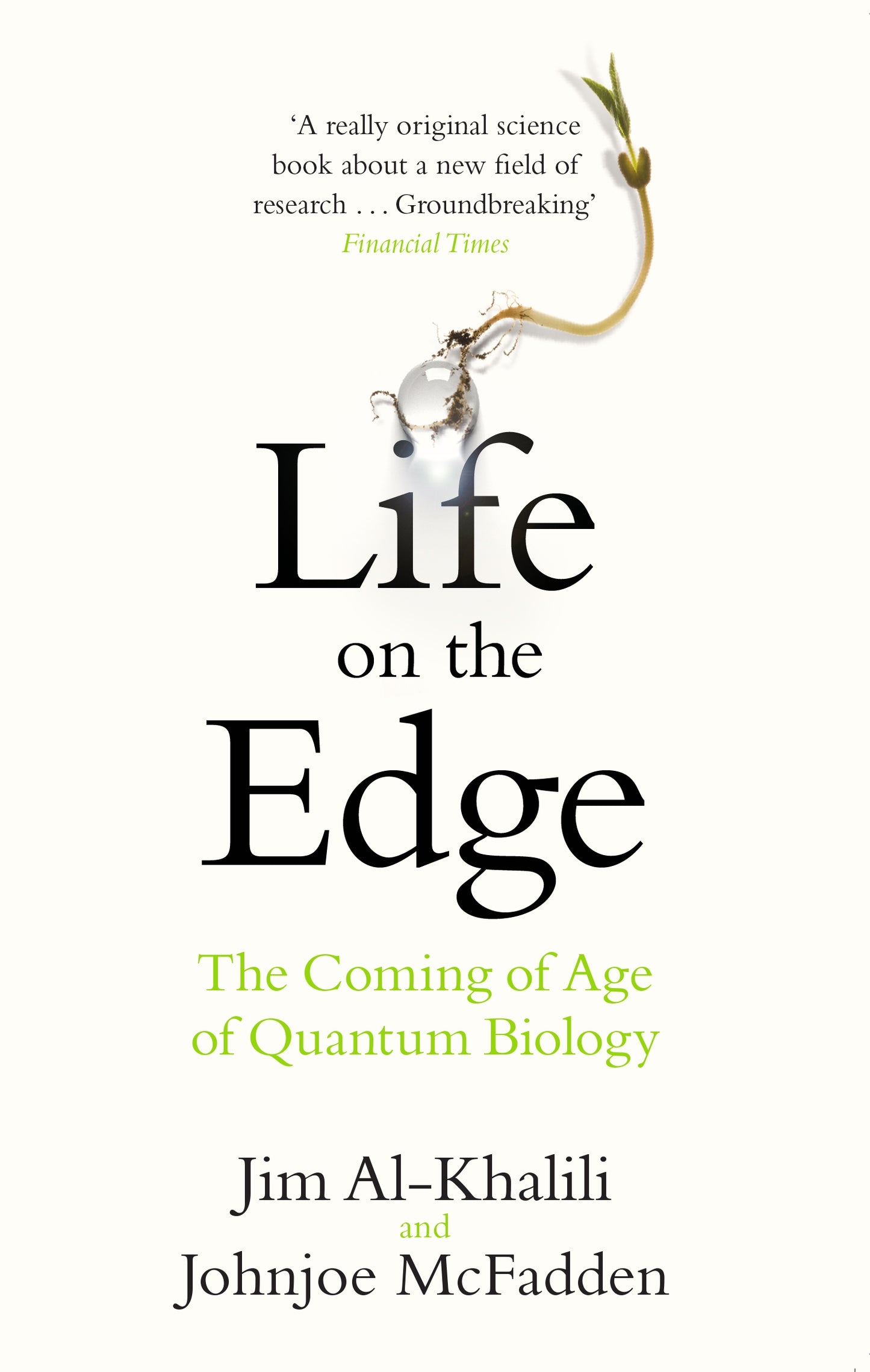Jim Al-Khalili
Life on the Edge
Life on the Edge
Couldn't load pickup availability
Gabi's Review
Jim Al-Khalili, a theoretical physicist, and co-author Johnjoe McFadden, a molecular geneticist, have collaborated on this wonderful new book. They show how quantum phenomena play a critical role in the mechanisms of life; exploring cutting-edge science, they unlock instances where quantum effects underpin fundamental biological processes such as photosynthesis, enzyme function, and magnetoreception in migratory birds. It might sound dry, but a curious layperson such as myself found the book both compelling and highly accessible.
The book’s central thesis is that life operates at the “edge” of the quantum and classical worlds. As one example, I assumed photosynthesis in plants utilised the plumbing pathways similar to the ways in which plants take up and distribute water and nutrients. The authors demonstrate how quantum coherence enhances the efficiency of energy transfer in photosynthesis, allowing plants to capture sunlight with remarkable precision, quantum tunnelling their enzymatic reactions. These particles bypass conventional energy barriers to drive life-sustaining chemistry at speeds unattainable by classical means.
One of the most interesting and beautifully described concepts covered in the book is magnetoreception - a sense which allows an organism to detect the Earth's magnetic field. The authors apply this to a conundrum that conventional science has grappled with for centuries: how do migratory birds traverse the same routes with pinpoint accuracy across vast and multiple continents? Quantum entanglement is revealed as the key to avian navigation, seen as something akin to a quantum GPS navigational system. Sensors in the birds’ eyes detect magnetic pulse lines, blinking into focus much like the way we can read the lines that divide our own roads.
The authors excel in making complex concepts accessible through vivid analogies and clear explanations. However, I feel a rudimentary understanding of Quantum might assist in understanding the concepts they explore, so permit me to offer you a layperson’s lens. Matter as we perceive it feels solid, its shape and form given structure by electrical and atomic forces. Now picture all the material universe with the space between atomic structures removed, and you would end up with a solid state the size of a car (this is a wild theoretical guess). Quantum mechanics complicates the picture, adding a layer of abstraction. Picture the underlying substrate as a sea of waves creating a multiplicity of forms endlessly arising and collapsing. The blend of probability and wave behaviour makes quantum tunnelling the strange non-deterministic reality beneath our macroscopic world.
While the book does not claim to resolve the ultimate question of “what is life,” it offers a transformative perspective on how quantum mechanics may be the missing ingredient in understanding life’s complexities. Life on the Edge is a thought-provoking and intellectually rigorous account of quantum biology as an exciting frontier, with profound implications for science and our perception of the material world.
Publisher's Review
The startling discovery that the weirdness of quantum mechanics provides the vital spark that ignites life
Life is the most extraordinary phenomenon in the known universe; but how does it work? Even in this age of cloning and synthetic biology, the remarkable truth remains- nobody has ever made anything living entirely out of dead material. Life remains the only way to make life. Are we missing a vital ingredient in its creation?
Like Richard Dawkins' The Selfish Gene, which provided a new perspective on evolution, Life on the Edge alters our understanding of life's dynamics as Jim Al-Khalili and Johnjoe Macfadden reveal the hitherto missing ingredient to be quantum mechanics. Drawing on recent ground-breaking experiments around the world, they show how photosynthesis relies on subatomic particles existing in many places at once, while inside enzymes, those workhorses of life that make every molecule within our cells, particles vanish from one point in space and instantly materialize in another.
Each chapter in Life on the Edge opens with an engaging example that illustrates one of life's puzzles - How do migrating birds know where to go? How do we really smell the scent of a rose? How do our genes manage to copy themselves with such precision? - and then reveals how quantum mechanics delivers its answer. Guiding the reader through the maze of rapidly unfolding discovery, Al-Khalili and McFadden communicate vividly the excitement of this explosive new field of quantum biology, with its potentially revolutionary applications, and also offer insights into the biggest puzzle of all- what is life?
Share


